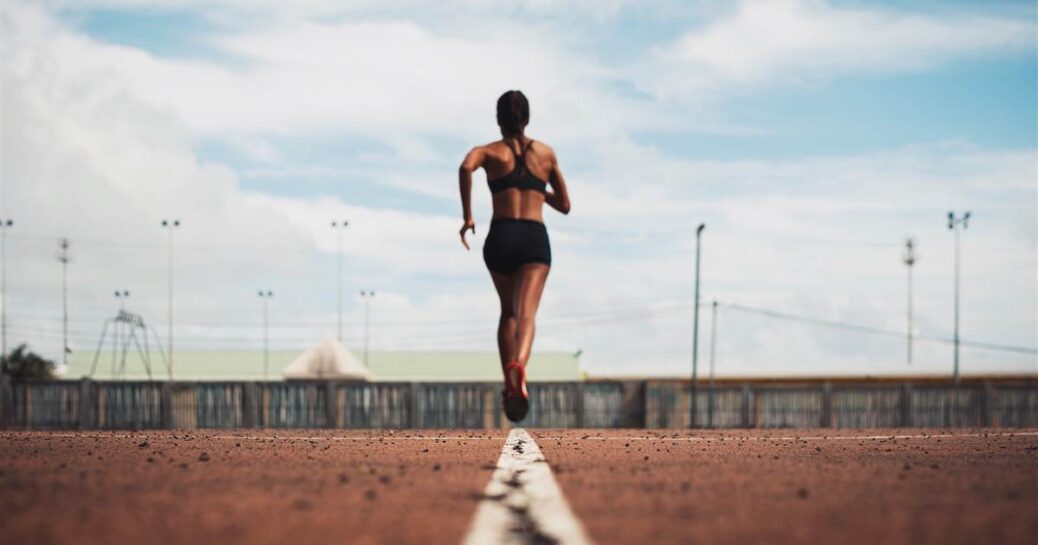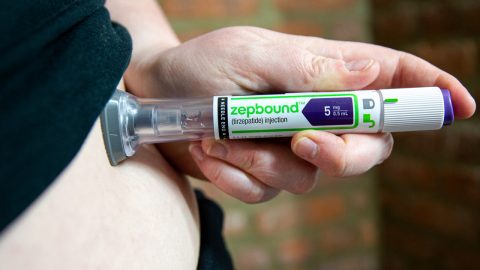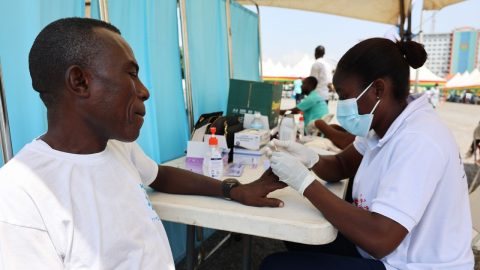
A new study suggests transgender women maintain an athletic advantage over their cisgender peers even after a year on hormone therapy.
The results, published last month in the British Journal of Sports Medicine, could mean the current one-year waiting period for Olympic athletes who are transitioning is inadequate.
“For the Olympic level, the elite level, I’d say probably two years is more realistic than one year,” said the study’s lead author, Dr. Timothy Roberts, a pediatrician and the director of the adolescent medicine training program at Children’s Mercy Hospital in Kansas City, Missouri. “At one year, the trans women on average still have an advantage over the cis women,” he said, referring to cisgender, or nontransgender, women.
Roberts began investigating the athletic performance of transgender men and women while in the Air Force, working under co-author and physician Lt. Col. Joshua Smalley at a clinic coordinating care for airmen beginning or continuing their gender transition.
Active duty service members are required to take a physical readiness test every six to 12 months. Roberts, Smalley and another co-author, Dr. Dale Ahrendt, realized they had access to robust data on service members before, during and after they started hormone replacement treatment.
The three physicians conducted a retrospective review of medical records and fitness tests for 29 transgender men and 46 transgender women from 2013 to 2018. The Air Force’s fitness assessment includes the number of pushups and situps performed in a minute, and the time required to run 1.5 miles.
They also had records on when the subjects started testosterone or estrogen, the type of hormone used and the number of days from when treatment began to when their hormone levels reached the normal adult range for a cisgender person.
For the first two years after starting hormones, the trans women in their review were able to do 10 percent more pushups and 6 percent more situps than their cisgender female counterparts. After two years, Roberts told NBC News, “they were fairly equivalent to the cisgender women.”
Their running times declined as well, but two years on, trans women were still 12 percent faster on the 1.5 mile-run than their cisgender peers.
Unsurprisingly, testosterone affected the fitness scores of the transgender men they reviewed: Prior to starting hormones, they performed fewer pushups and had slower running times than the cisgender men in the control group. A year into treatment, though, those differences disappeared.
With situps, the trans men were comparable to the cisgender men before treatment and actually exceeded them after a year on testosterone.
The longest any participant was followed was two and a half years, according to Roberts.
He said he’s not suggesting being in the military is the same as being an elite athlete, but, he added, “it’s a comparable situation, where you have someone doing whatever they can to maintain or improve their abilities.”
Joanna Harper, a medical physicist in Portland, Oregon, has conducted research into the effect of testosterone blockers on transgender women runners like herself.
In 2015, she published the first study of transgender women and athletic performance and found that trans women ran at least 10 percent slower after beginning hormones. And, relatively speaking, they did no better against cisgender female runners than they had previously done against cisgender men.
Harper said Roberts’ methodology is solid, but she sees some limitations in the study. In an assessment shared with NBC News, she questioned the lack of data on participants’ individual training habits. She also noted there was no coordination between when subjects started hormones and when they took their annual fitness test.
“The tests were placed into three bins,” Harper said. “One bin of tests that took place in the first year after the start of hormone therapy, one bin of tests that took place between one to two years of hormone therapy, and a third bin that took place between two and two and a half years after the initiation of hormone therapy.”
Lumping the data together could blur out changes that occurred within a 12-month period “and might distort the results notably,” she theorized.
The fact that the trans women were still faster after two years could be due to differences in training intensity, she speculated. But the pushup and situp tests involve muscular strength, technique, muscular endurance and cardiovascular endurance, and “are probably good proxies for success in many team sports.”
Increased scrutiny of trans athletes
As the transgender community has become more visible, their place in athletic competitions has come under increased scrutiny.
In October, the World Rugby League became the first international sporting body to ban transgender women from playing in the women’s division, citing “player welfare risks.” Two months later, a group of 200 elite female athletes — including Billie Jean King, Megan Rapinoe and Candace Parker — signed a friend-of-the-court brief supporting the rights of trans women and girls to participate in female sports.
The brief was filed with the 9th U.S. Circuit Court of Appeals in response to Idaho’s Fairness in Women’s Sports Act, signed by Gov. Brad Little, a Republican, in March. The law prohibits transgender athletes from competing in school sports consistent with their gender identity, regardless of when they transitioned.
The case is currently before the 9th Circuit after a lower court blocked it from going into effect in August.
“There is no place in any sport for discrimination of any kind,” King in a statement. “I’m proud to support all transgender athletes who simply want the access and opportunity to compete in the sport they love.”
Idaho is the first state to pass such a ban, but similar legislation has been introduced in Alabama, Georgia, Indiana, Missouri, New Hampshire, Tennessee and Washington.
In Congress, Sen. Kelly Loeffler, R-Ga., sponsored S.4649, the “Protection of Women and Girls in Sports Act,” which seeks to pull federal funding from any school that allows someone assigned male at birth to compete in girls’ athletics. Sen. Mike Lee, R-Utah, a co-sponsor, calls the measure “a simple question of fairness and physical safety.”
Proponents of such legislation have already started using Roberts’ research to support their cause, but he insists he’s not on board.
“I’m definitely coming out and saying, ‘Hey, this doesn’t apply to recreational athletes, doesn’t apply to youth athletics,’” he said. “At the recreational level, probably one year is sufficient for most people to be able to compete.”
He also underscored the data he compiled was on adults: The average age of the airmen he studied was 26. A transgender woman who transitions before or at puberty, “doesn’t really have any advantage” when it comes to athletic performance, he said. “So that young lady should be allowed to compete with all the other people who are born women.”
It’s at the Olympic level where a few percentage points matter, he said, “and we need to do a few more studies to see if that’s a permanent effect.”
“There wasn’t really a whole lot of data available when the IOC made their guidelines,” Roberts added, using the acronym for the International Olympic Committee. “Now we have a little bit more.”
Harper, who was a consultant on the IOC’s current recommendations, said the real takeaway from Roberts’ study is that transgender women ultimately do reach parity with cis women in athletic tasks. She, however, doesn’t think Roberts’ findings mean sporting organizations need to require two years of testosterone suppression before trans women can compete against cisgender women.
“It’s not necessary for all advantages to be removed,” she said. “All that is necessary is for trans women to perform more like cisgender women than like cisgender men.”
A ‘totally level’ playing field
Roberts said there is no way to remove all of an athlete’s advantages — regardless of their gender identity.
“People who got testosterone at puberty tend to have narrower hips. If you’re taller and have narrower hips, that gives you an advantage that’s probably not going to change from testosterone blockers or estrogen,” he said. “On the other hand, we have a lot of elite female athletes who tend to be tall and thin with slender hips — and we’re not outlawing them.
Roberts also noted that physical advantages are not the only advantages that some athletes have over others.
“LeBron James’ kids have access to the best coaches and the best facilities with the best equipment. They’re going to have an advantage over somebody,” he said. “And all of those people are still in the same competition.”
The IOC last revised regulations for transgender competitors in 2016, removing a requirement for gender-confirmation surgery and lowering the minimum requirement for hormone-replacement therapy for trans women from two years to one.
Currently, transgender men can compete in men’s events without any restrictions.
The guidelines, which are employed by most sports federations, also established that trans female athletes must maintain testosterone levels below 10 nanomoles per liter. That’s on the far low end for most cisgender males but higher than average for cisgender women, whose testosterone typically falls between 0.3 and 2.4 nanomoles per liter.
But, Roberts points out, cisgender women with polycystic ovary syndrome and some other conditions can have levels three times that — or even higher. Nearly a third of elite adolescent female athletes have relatively elevated testosterone, compared to just 2 to 12 percent of the general female population. Female Olympians also tend to have higher levels than age-matched controls.
“The playing field has never been totally level,” Roberts said.
The International Olympic Committee said it is working on new guidelines to be released some time in 2021 after the rescheduled Tokyo Summer Games.
“This work is based on an extended consultation to consider not only the medical, scientific and legal perspectives, but also that of human rights, with an emphasis on the view and experiences of affected athletes,” an IOC spokesperson said in an email. “Overall, the discussions to date have confirmed considerable tension between the notions of fairness and inclusion, and the desire and need to protect the women’s category, all of which will need to be reconciled.”










Recent Comments